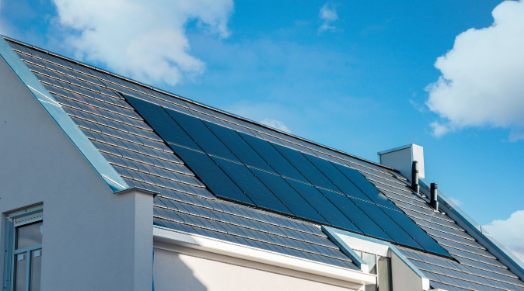Solar Power vs. Electricity

In the modern age, the quest for sustainable and efficient energy sources has led to significant advancements in both traditional electricity and solar power technologies. While electricity has been the backbone of industrial and technological development for over a century, solar power, as highlighted by the efforts of organizations like https://www.njsolarclub.org/, has emerged as a key player in the renewable energy sector, offering a promising alternative to fossil fuels. Understanding the nuances of each can help individuals and communities make informed decisions about their energy consumption. This perspective not only promotes a greener planet but also empowers consumers to explore cost-effective and environmentally friendly options for their power needs.
Comparing Solar Power and Traditional Electricity
Cost Implications
Initial Investment and Long-term Savings
The initial cost of installing solar panels is often cited as a significant barrier to entry. However, the long-term savings on electricity bills and the potential for government incentives can offset these initial costs. In contrast, traditional electricity costs are subject to fluctuating market prices for fossil fuels, potentially leading to higher expenses over time.
Maintenance and Operation Costs
Solar power systems generally require minimal maintenance, mainly involving periodic cleaning and occasional component replacement. This contrasts with the ongoing maintenance and operational costs associated with traditional electricity generation, transmission, and distribution infrastructures.
Energy Efficiency and Environmental Impact
Carbon Footprint and Sustainability
Solar power offers a clean, renewable source of energy, significantly reducing the carbon footprint of households and businesses. Traditional electricity production, especially from coal and natural gas, contributes to greenhouse gas emissions, exacerbating climate change.
Resource Consumption and Energy Independence
Solar energy, harnessed directly from the sun, provides a practically inexhaustible source of power. It also promotes energy independence, reducing reliance on imported fuels. Traditional electricity generation, on the other hand, often depends on finite natural resources, which can lead to geopolitical tensions and supply chain vulnerabilities.
Adaptability and Scalability
Residential and Commercial Applications
Solar power systems can be installed in a wide range of settings, from residential rooftops to commercial solar farms. This adaptability allows for both small-scale and large-scale applications, tailored to specific energy needs. Traditional electricity systems, while versatile, require extensive infrastructure and are less flexible in deployment.
Grid Integration and Energy Storage
Advancements in solar technology, including battery storage solutions, have improved the integration of solar power into the existing electrical grid. This enhances the reliability of solar energy, even in off-peak sunlight hours. Traditional electricity grids are designed for continuous power flow and can be less accommodating to variable renewable energy sources without significant upgrades.
Future Prospects and Innovations
Technological Advances in Solar Power
Ongoing research and development in solar technology promise even greater efficiency and lower costs in the future. Innovations such as perovskite solar cells and solar tracking systems are set to revolutionize the way solar energy is harvested and utilized.
Sustainability Goals and Policy Support
As global awareness of environmental issues grows, so does the support for renewable energy sources like solar power. Government policies and incentives play a crucial role in encouraging the adoption of solar technology, aiming to meet sustainability goals and reduce dependence on fossil fuels.
FAQs
What are the initial costs of installing solar panels compared to traditional electricity?
The initial cost of solar panels can be higher, but long-term savings and potential government incentives can offset these costs, unlike the ongoing costs associated with traditional electricity.
How does solar power affect the environment compared to traditional electricity?
Solar power significantly reduces carbon footprint and promotes sustainability, whereas traditional electricity, especially from fossil fuels, contributes to greenhouse gas emissions.
Can solar power systems be used in both residential and commercial settings?
Yes, solar power systems are adaptable and scalable for various applications, including both residential rooftops and commercial solar farms.
What advancements are being made in solar technology?
Innovations like perovskite solar cells and solar tracking systems are enhancing the efficiency and lowering the costs of solar energy.
How does solar power contribute to energy independence?
Solar power reduces reliance on imported fuels by harnessing an inexhaustible source of energy directly from the sun, promoting energy independence.
Conclusion
The comparison between solar power and traditional electricity highlights the potential benefits and challenges associated with each. While solar power offers a sustainable and increasingly cost-effective option, traditional electricity remains a staple due to its established infrastructure and reliability. The decision between the two often depends on specific circumstances, including location, energy needs, and environmental priorities. With the continued advancement of solar technology and supportive policies, the future of solar power looks bright, promising a cleaner, more sustainable energy landscape. For those considering making the switch to solar, resources like New Jersey Solar Club offer a wealth of information and support to navigate this transition successfully.




























